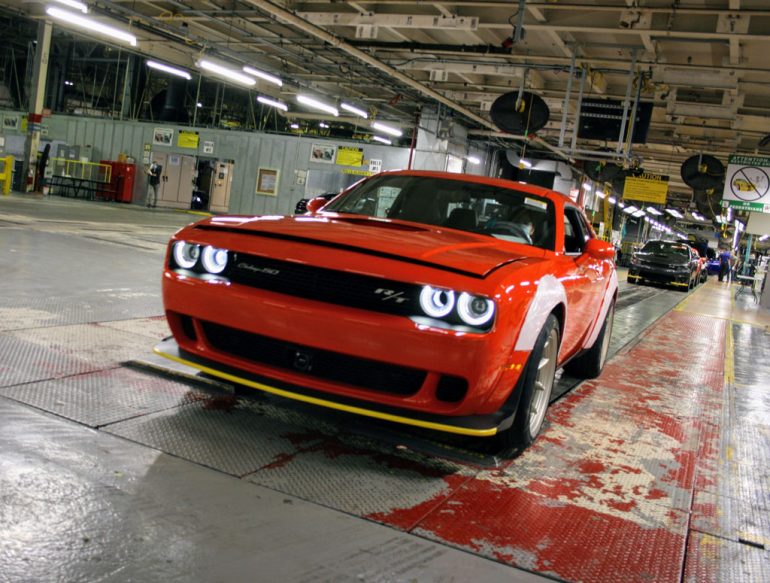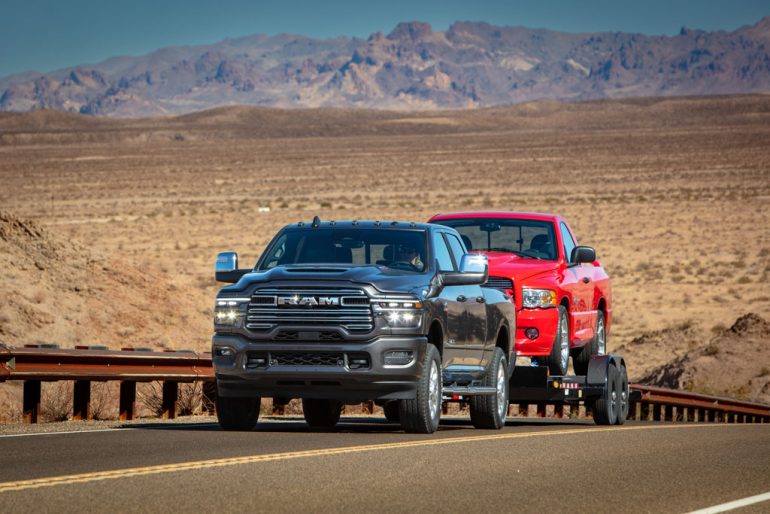Automotive

The global auto industry is taking a direct hit from new tariffs, and the financial fallout is now becoming painfully clear. Two of the industry’s biggest players, Stellantis and General Motors, have revealed substantial losses in recent weeks — with billions wiped off balance sheets due to shifting trade policies and supply chain pressures. And unfortunately for automakers and consumers alike, the damage may only be beginning.
Stellantis Stalls Amid Tariff Shock and Slumping Sales
Stellantis, the parent company behind Jeep, Ram, Dodge, and Chrysler, just dropped some sobering news. The company reported a staggering $2.68 billion net loss for the first half of 2025, directly blaming the impact of newly implemented tariffs and a tough sales climate, particularly in North America.

Shipments fell 6 percent globally in Q2, with North American deliveries plummeting by 25 percent — a loss of roughly 109,000 vehicles. That kind of volume drop is hard to absorb, especially as the company struggles with what it calls “product transition factors” and weaker fleet sales. Stellantis says $300 million of the loss came directly from tariffs, but that’s just one piece of a larger storm of canceled production, rising industrial costs, and unfavorable foreign exchange rates.
New CEO Antonio Filosa, who took over the reins in May, now faces the daunting task of steadying the ship. Though he remains optimistic and insists Stellantis has what it takes to bounce back, the brand’s U.S. foothold has clearly been shaken. Bright spots remain in international markets — with notable sales growth in the Middle East, Africa, and South America — but it will take much more than that to counterbalance the hit in its most profitable region.

GM Hit Hard, Too — And Bracing for More
While GM’s second-quarter results looked solid at first glance, a deeper dive reveals the toll tariffs are taking. The Detroit giant posted a $1.1 billion year-over-year revenue loss for Q2, with executives pointing squarely to tariffs as the main culprit. And the bleeding won’t stop there. GM says it expects a $4 to $5 billion impact in total by year’s end.
A big portion of that comes from Korean imports. GM builds several high-volume crossovers — like the Trailblazer, Trax, Encore GX, and Envista — in Korea, and new trade penalties are significantly raising costs for those vehicles. The company is scrambling to soften the blow by adjusting production strategies and shifting some manufacturing, which they hope could reduce tariff-related losses by up to 30 percent. But as GM CFO Paul Jacobson noted, these fixes will take time to yield results.

Still, not all was doom and gloom on the earnings call. Thanks to a sales spike in April and May — when buyers rushed to dealerships to beat anticipated price hikes — GM posted record revenue of $91 billion for the first half of 2025. SUVs led the surge, with the Chevrolet Equinox seeing a 20 percent year-over-year sales jump.
The EV story is more mixed. While Chevrolet became the second-best-selling EV brand in the U.S. last quarter, and Cadillac moved into fifth place, GM also acknowledged that the loss of federal EV incentives is starting to bite. CEO Mary Barra reaffirmed the company’s long-term EV commitment, saying GM is focused on scaling electric vehicle production to match the profitability of its gas-powered offerings — but she made it clear the path forward will be about adaptability.

Industry-Wide Impacts Mount
Stellantis and GM aren’t the only ones feeling the pinch. Automakers across the board are grappling with the unpredictable reality of a new trade environment, where tariffs can swing profitability overnight. As tensions rise between major economies, especially over EVs and battery components, more manufacturers may be forced to make uncomfortable decisions — from shifting production to cutting costs, pausing model rollouts, or raising prices.
The ripple effect is already being felt by suppliers, dealers, and ultimately, consumers. Vehicles built overseas or reliant on foreign parts are likely to become more expensive. Inventory levels could tighten again in some regions. And with the U.S. election season heating up, trade policy may become even more volatile in the coming months.
In short, 2025 is shaping up to be a defining year for the global auto industry — not just because of the EV transition or changing consumer habits, but because of the reemergence of tariffs as a core financial threat. Whether automakers can adjust fast enough remains to be seen.
For now, all eyes are on Stellantis and GM as they navigate the storm. The next few quarters will be critical, and we’ll be following closely here at Automotive Addicts as this high-stakes battle between trade policy and profitability continues to play out.
FOLLOW US TODAY:

Lloyd Tobias is a seasoned automotive journalist and passionate enthusiast with over 15 years of experience immersed in the world of cars. Whether it’s exploring the latest advancements in automotive technology or keeping a close pulse on breaking industry news, Lloyd brings a sharp perspective and a deep appreciation for all things automotive. His writing blends technical insight with real-world enthusiasm, making his contributions both informative and engaging for readers who share his love for the drive. When he’s not behind the keyboard or under the hood, Lloyd enjoys test driving the newest models and staying ahead of the curve in an ever-evolving automotive landscape.


